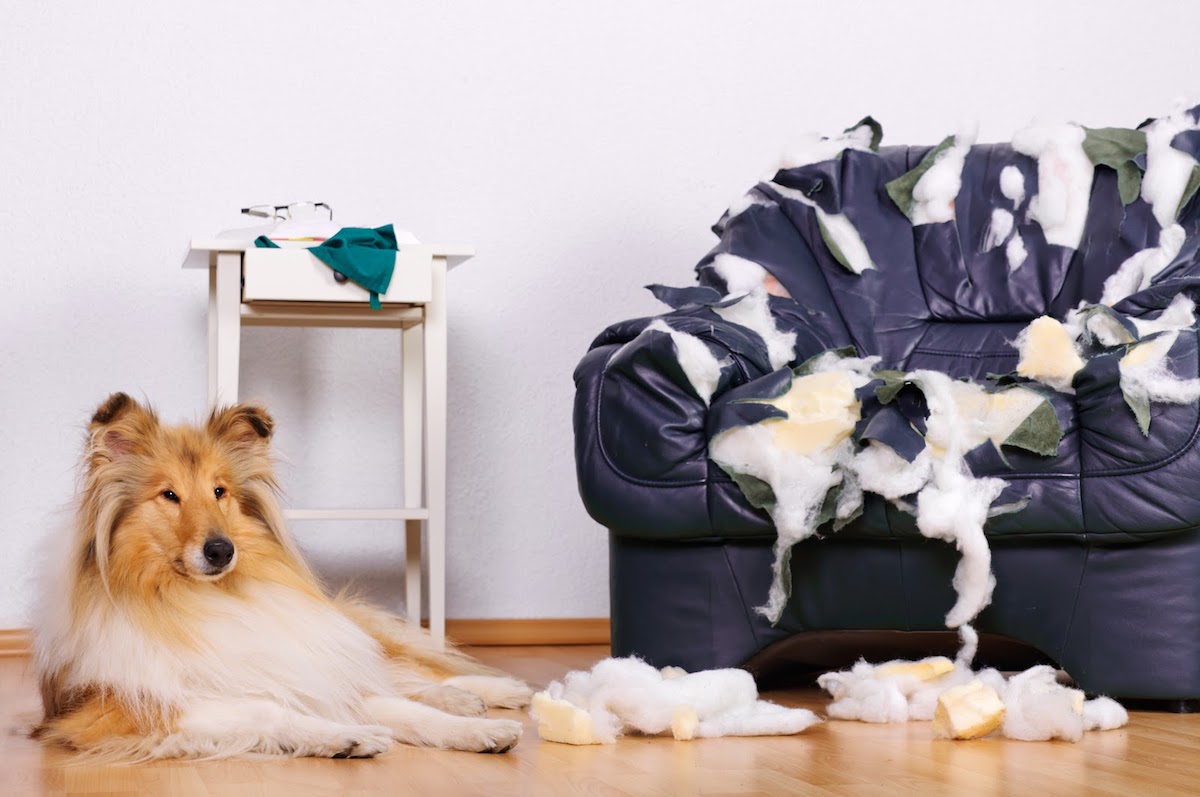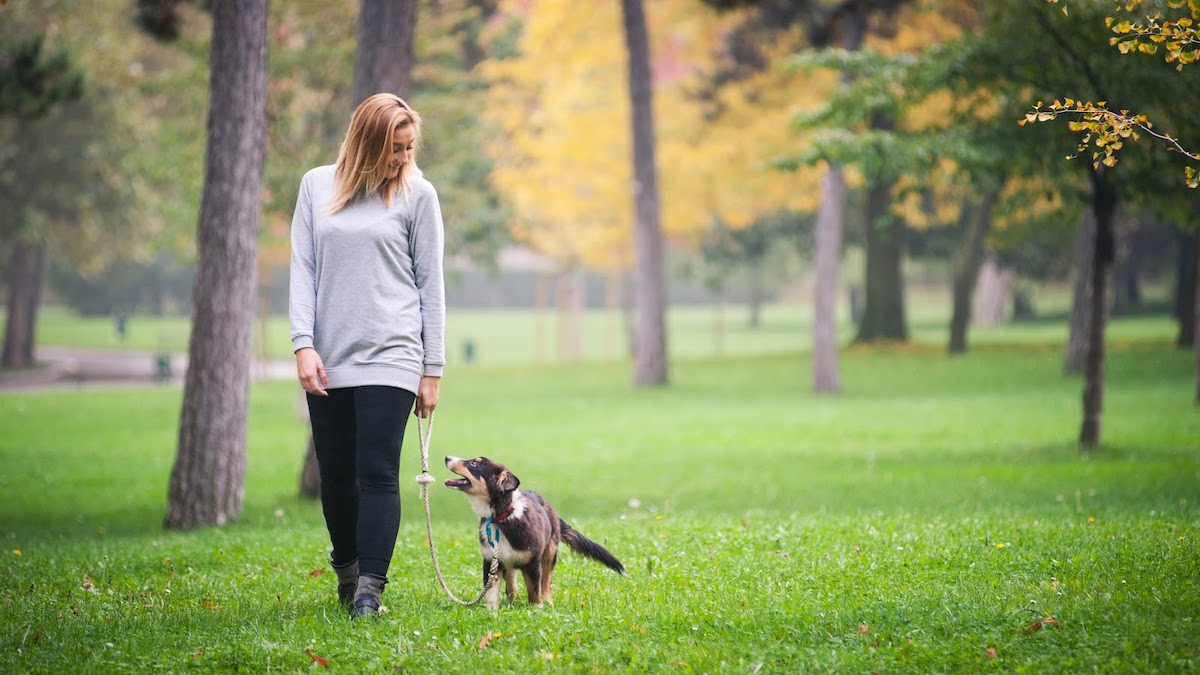Does your dog have difficulty being alone? Have you wondered about dog separation anxiety, how it's defined, and how it differs from other separation related problems? Need advice on how to make it easier for your dog to be alone? We're here to help.
Dogs can experience a wide variety of isolation problems with varying symptoms and causes. For example, one dog may be afraid of being alone, while another may be acting out in frustration due to a lack of daily exercise. A dog’s health problems can also make them feel insecure and vulnerable, which can manifest as a behavioral problem when they're in solitude.

Dog owners are quick to use the term separation anxiety, but not all behavioral problems that occur during separation are a result of separation anxiety. Separation Distress Syndrome (SDS), commonly referred to as separation anxiety, is caused naturally by genetic factors.
Before dogs were domesticated, puppies left alone at an early stage of development typically knew how to avoid danger through their connection to their mother. This trait has also allowed herds of dogs to form lifelong social relationships with each other. Now that dogs have been domesticated, this behavioral pattern of bonding and attachment with other animals has extended to humans. It's this trait that has allowed human owners to become their dog's best friend.
The typical symptoms of separation anxiety include attempts to escape, barking or howling, drooling, vomiting, loss of appetite, urinating indoors, and the destruction of exits, such as doors and window frames. Though these associated symptoms may be mild, the syndrome itself is defined primarily by an overwhelming fear or anxiety toward being alone.
For example, a dog without separation anxiety may be frustrated by the lack of stimulus in their daily life, causing them to act out when their owners are away. In these cases, dogs are likely to take food off tables or countertops or cause damage to furniture and objects they're not able to touch when people are present. Some bored dogs, on the other hand, may bark in frustration once their owners leave and they know they won't get in trouble.
Separation related problems can be caused by dog welfare problems as well as a lack of skills or experience with being alone. Dogs should be trained to be alone already as puppies. Big life changes, such as moving to a new home, the passing of one of their friends, or changes in the family, can also trigger separation anxiety or cause issues with being alone.
How to Treat Dog Separation Anxiety?
When treating your dog's separation anxiety, you should first ensure that there's no physical ailment behind their symptoms. If you're unsure, consider bringing them to your veterinarian. After all, even a dog that's eating, playing, running, and jumping normally could be experiencing health problems. Dogs have evolved to have an impressively high tolerance for pain, which is often why their health problems can be difficult to detect by even the most attentive of dog owners.
Every dog has its own unique way of behaving, so it's impossible to create a simple guide that works for all dogs. However, what all cases of separation anxiety have in common is that the well-being and circumstances of the dog's life must be taken into account. Dogs should be receiving an appropriate amount of exercise, proper nutrition, a healthy amount of sleep, and breed-specific activities such as stimulated feeding. Their home should be accommodating for them while also making them feel safe.
Once you ensure that your dog is getting the care and attention they need, you can begin training them to develop a rest routine. This is the most important skill in isolation training, as your dog will try to repeat the routine whenever they notice you're leaving the house.
If your dog’s situation is severe, meaning they suffer from strong fears or are in danger of injuring themselves, stop leaving your dog alone and contact a professional dog trainer. A severely anxious dog should not be left alone, as their fear will only increase through exposure and will potentially put them in danger going forward. Fear is an extreme experience for a dog, and it can cause everything from stress to long-term physical illnesses. Their brains are different from ours, as dogs cannot properly reason that they're in a safe situation when alone. This leads them to believe that their fearful reaction is entirely appropriate, with their level of fear increasing with every event.
In severe cases of separation anxiety, we recommend consulting a professional. In milder cases, however, you can try to help your dog gradually become accustomed to being alone. Solving isolation problems will require both patience and familiarity with the syndrome itself. Dog behavior specialist Jenny Jalonen has written a comprehensive information package on the Digital Dogsitter website about separation anxiety and other loneliness problems. It's definitely worth a read! In addition to the backgrounds of the problems, there are plenty of tips on interpreting the dog's behavior and high-quality separation training.
Tips for Separation Anxiety Training and Reducing Separation Related Problems at Home
- Make sure your dog’s emotional and physical needs are being met. Give them lots of exercise as well as opportunities to move around freely and play challenging brain games. Ensure there's enough time for the dog to calm down between activities and separation.
- Teach your dog to calm down and relax, even without you around. Start with easier situations where your dog is more likely to be relaxed, not situations that may facilitate nervousness, such as being gone for extended periods of time.
- Make sure your dog has several places to sleep and calm down when they're alone.
- Ensure that your leaving routines aren't rushed or irregular in a way that might make your dog nervous. They should be capable of calming down when they notice that you're leaving.
- Ignore your dog before you leave if they try to participate in the situation or leave with you. When you're preparing to leave, use a simple phrase that tells the dog that you are going out alone and will return later. Repeat this sentence as you leave through the front door. This way, your dog doesn’t have to wonder whether or not they'll be joining you this time.
- Remember that every dog is unique. One dog may only need a little help calming down while another may require a lot more time to develop these skills. What works for one dog may not work for another.
- Make a plan based on your dog’s characteristics and stick to it for at least 2 weeks at a time, unless their behavior worsens at a tremendous rate. Rapid changes won't teach your dog to learn a new routine. It only makes them increasingly nervous.
- Read the comprehensive guide on dog separation anxiety and other separation related problems.
- Monitor your dog’s time alone with Digital Dogsitter.
 Deutsch
Deutsch English
English Español
Español Français
Français Italiano
Italiano 日本語
日本語 Português
Português Suomi
Suomi Svenska
Svenska



